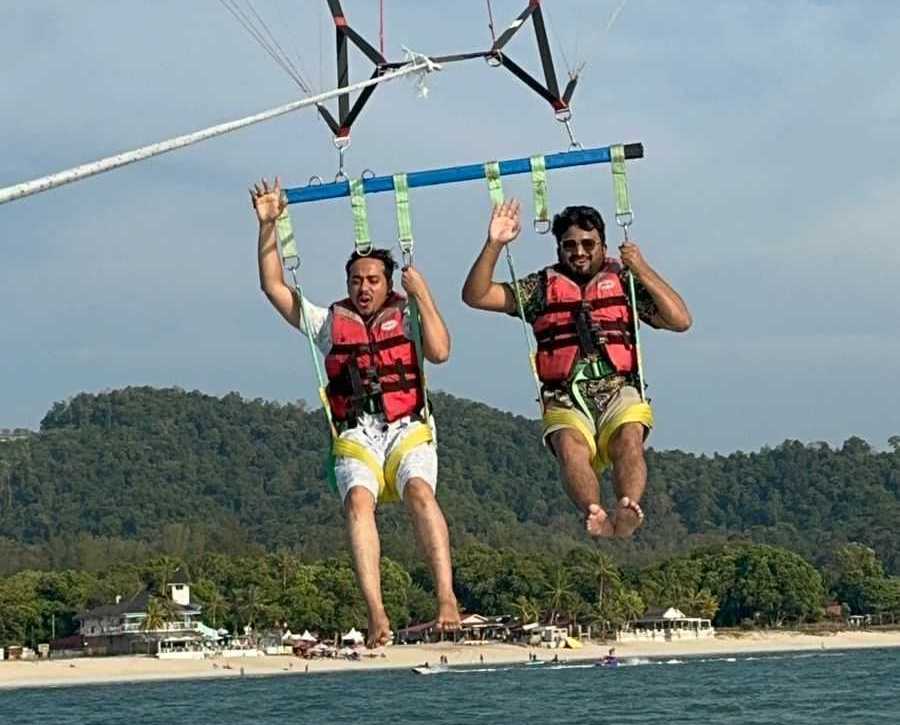And what to do about them…
Introduction
In today’s digital era, where technology transcends borders, mastering the art of managing global software engineering teams has become a pivotal skill for leaders in the tech industry. This is true whether you’re managing remotely or moving somewhere new to manage in-person.
In a recent episode of Mission’s podcast, The Better Build, Sophea Loche, VP of Engineering at Egencia, shared insights from over two decades of experience in engineering leadership, with a career spanning across Europe, India, and the United States. Her experiences underscore the importance of not just managing but inspiring and connecting with teams spread across the globe.
The interview inspired us to delve deeper into the less-explored realms of global team management, examining best practices and unique challenges that tech leaders face today. While we have referred to quotes from Sophea to support our perspective on certain points, this investigation and its point of view is our own.
Why All Tech Leaders Can Benefit from These Tips
As leaders in this domain, CTOs and tech leaders must navigate various aspects, such as embracing cultural diversity, empowering team leadership, addressing language barriers, and fostering an ethos of continuous learning and adaptation. Effectively managing these elements is not just about overseeing a workforce; it’s about creating a synergy that transcends geographical boundaries and cultural differences, uniting a team towards common goals and visions.
This article offers practical advice and strategies to equip you with the tools and insights necessary to lead your international teams to new heights of innovation and success. Whether leveraging cutting-edge technology for collaboration, empowering team leaders to act autonomously, or creating a culture that embraces continuous learning and emotional intelligence, the goal is to provide a comprehensive guide to the multifaceted world of global team management.
Overcoming Time Zone Challenges
Let’s begin with one of the more common issues. Managing a team spread across multiple time zones presents unique operational challenges. The key is to turn these challenges into opportunities for enhancing productivity and team cohesion.
Start by mapping out the time zones of all team members and establish an expected ‘overlap’ time. This overlap is crucial for scheduling meetings and collaborative work sessions. However, be mindful that this window may fall outside of regular working hours for some team members. Rotate meeting times to ensure that no single group is consistently inconvenienced, or at least get everyone on the same page as to what the schedule will be day to day so everyone can adjust accordingly.
Set clear expectations regarding response times. Understanding that immediate responses are not always feasible can reduce stress and improve productivity. Encourage team members to indicate their working hours and use status messages to show availability.
Remember, overcoming time zone challenges is not just about scheduling; it’s about fostering a culture of flexibility and understanding. By showing consideration for your team’s personal lives and working conditions, you can build a more committed and productive workforce.
Building Trust Across Borders
Building trust across global teams is a cornerstone of success, and it demands a thoughtful and committed approach. Sophea Loche’s insights shed light on the importance of trusting team members in order to foster more in return. As she puts it, “The trust for me is around making sure that once we align on the directions, they have the power to make decisions, and they have the credit.”
Trust is more than just a shared agreement; it’s about empowering team members and recognizing their efforts. Sophea emphasizes, “When things don’t happen, and they have issues, it will be me who needs to help them to remove the blockers; [they know] they can count on me.”
Transparency is crucial. Keep the team informed about company goals, project progress, and any company challenges. When team members understand the bigger picture, they are more likely to feel invested and trusted.
Lastly, be culturally sensitive in your leadership approach. Understand the cultural nuances that may affect team members’ perception of trust and authority. Some cultures may value hierarchical structures, while others prefer a more collaborative approach. Adapting your leadership style to these nuances can go a long way in building trust.
Leveraging Technology for Collaboration
In the dynamic landscape of global team management, leveraging technology is not just a necessity but a strategic advantage. Advanced communication tools are the cornerstone of this approach. Video conferencing platforms like Zoom and Microsoft Teams bring team members face-to-face, bridging the gap created by distance. These platforms, coupled with instant messaging and collaboration tools such as Notion, Slack, and Microsoft Teams, facilitate not only formal meetings but also spur spontaneous interactions and quick information exchanges. Additionally, cloud-based services like Google Workspace and Microsoft Office 365 revolutionize how teams collaborate on documents, allowing real-time editing and feedback, thus streamlining workflow and eliminating version control hassles.
However, technology’s role extends beyond just facilitating tasks and meetings. It is pivotal in fostering a cohesive team culture in a virtual environment. Regular virtual team-building activities, utilizing the same video conferencing tools used for meetings, help in creating a sense of community. The thoughtful application of technology in global teams goes a long way in enhancing productivity and building a connected and engaged workforce.
Embracing Cultural Diversity
In global team management, cultural diversity is both a challenge and a strength. As a CTO or tech leader, recognizing and leveraging the diverse cultural backgrounds of your team can lead to unparalleled innovation and problem-solving capabilities. This diversity brings varied perspectives, work ethics, and problem-solving approaches, enriching the team’s collective intelligence.
As Sophea Loche put it, being an outsider can have some unexpected initial benefits too, “Being an outsider, I didn’t have to be judged by the standard of society sometimes. So it was a kind of benefit for me.” She continues,. “Being French…being confrontational is not an issue for me. I pick my fights, but I’m open to listening to all perspectives,” she said.
The ultimate goal is to create an inclusive environment where every voice is heard and valued. It would be best if you made conscious efforts to accommodate different communication styles and work approaches. For instance, some cultures may appreciate directness, while others prefer a more nuanced approach. Understanding and adapting to these nuances can significantly improve team dynamics.
Embracing the diversity among team members will ultimately be more rewarding than trying to level out the differences completely. As a leader, fostering an environment that makes space for diversity is critical to driving innovation and staying competitive in a global market.
Empowering Team Leadership in Global Software Engineering Teams
Empowering local leadership is a critical component in the success of global software engineering teams. In such teams, where members are often spread across different geographies and cultures, local leaders play a pivotal role in bridging gaps, ensuring clear communication, and aligning local efforts with the overall organizational goals.
Firstly, empowering local leaders means giving them the autonomy to make decisions that best suit their regional teams. This autonomy is crucial for swift decision-making and adapting to local challenges and opportunities. Central leadership must trust these team leaders, giving them the authority and resources to lead effectively.
This involves regular training and development to equip them with the skills to manage diverse teams and complex projects. Additionally, it’s beneficial to establish clear and consistent communication channels between central and local leadership. This helps maintain a unified vision and strategy while allowing for the flexibility needed to cater to local nuances.
“To be very successful…you need to get a couple of leaders to be on-site, to make sure we instill the right seed at different teams, and train them so the seed will grow,” says Sophea Loche.
Fostering Continuous Learning and Adaptation
Developing a learning environment starts with leadership. Leaders should encourage a mindset of continuous improvement and lifelong learning. This can be done by setting personal examples or providing resources and opportunities for learning and development.
At Mission, software talent is supported and empowered to flourish through an insights platform that provides data both team leadership, companies, and contributors can use. Encouraging this kind of knowledge sharing within the team is a crucial aspect. This can be facilitated through regular tech talks, workshops, and team presentations.
Creating community through events, internal forums or chat groups where team members can share articles, tutorials, and insights promotes a culture of shared learning. Mentoring programs, where more experienced team members mentor their junior counterparts, can also be highly effective.
Encouraging a growth mindset among team members is vital. This means viewing challenges as opportunities to learn rather than as obstacles. Recognizing and rewarding efforts toward learning and improvement can reinforce this mindset.
Conclusion
Navigating the complexities of global software engineering teams demands a multifaceted approach, blending cultural sensitivity, technological savvy, and a commitment to continuous learning. In this journey, embracing cultural diversity, empowering local leadership, addressing language barriers, and fostering an environment of constant learning and adaptation are not just challenges but opportunities to excel.
Mission is well-versed in global leadership, as it was built into our model of working from the beginning. We are a network of global software engineering talent and put the above best practices into action daily. To work with our network, whether in a hiring or working capacity, get started and learn more at mission.dev.


